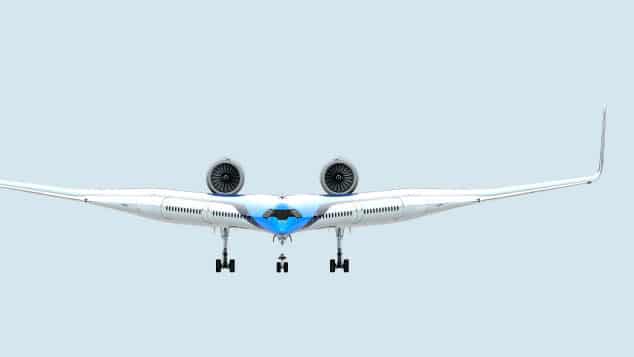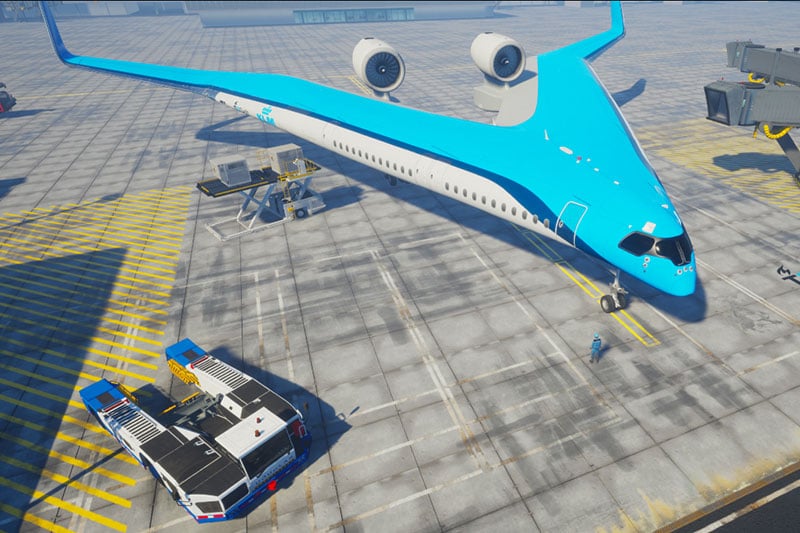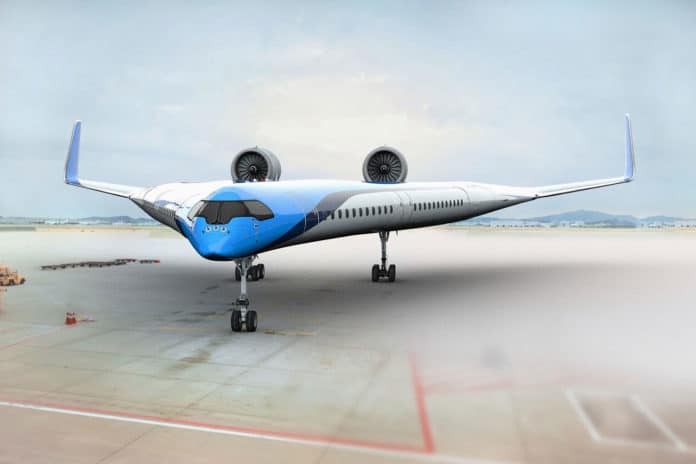The KLM Royal Dutch Airlines and Delft University of Technology (TU Delft) has teamed up to make aviation more sustainable at the IATA Annual General Meeting in Seoul. The Dutch airline will be contributing towards TU Delft’s research into an innovative flight concept known as the “Flying-V”.
The V-shaped airplane has an entirely different aircraft design. It is designed for a highly energy efficient long-distance airplane. A radial new airplane design puts passenger seats inside the plane’s wings. Along with the passenger cabin, the aircraft’s V-shaped design will also integrate the cargo hold and the fuel tanks in the wings structure.
This totally different futuristic shape will make the “Flying V” lighter and more aerodynamic. Its designer team also says that the aircraft will use 20% less fuel than the Airbus A350, today’s most advanced aircraft.

Like the advanced Airbus A350, the Flying-V will seat 314 passengers, while the Airbus A350 seats between 300 and 350. The design also mirrors the A350’s 65-meter (213 feet) wingspan, enabling it to use existing airport infrastructure. It will also carry the same volume of cargo, 160m3, KLM said.
Although the plane is not as long as the A350, it does have the same wingspan. This will enable the Flying-V to use existing infrastructure at airports, such as gates and runways, without difficulty and the aircraft will also fit into the same hangar as the A350.
The Flying-V will be smaller than the A350, giving it less aerodynamic resistance. “The Flying-V is smaller than the A350 and has less inflow surface area compared to the available amount of volume. The result is less resistance. That means the Flying-V needs less fuel for the same distance,” said Dr. Roelof Vos, the project leader at TU Delft.

The plane also uses the most fuel-efficient turbofan engines that currently exist. In its present design, it still flies on kerosene, but it can easily be adapted to make use of innovations in the propulsion system – by using electrically-boosted turbofans for instance.
“Our ultimate aim is one of emission-free flight. Our cooperation with KLM offers a tremendous opportunity to bring about real change,” said Dean of the Faculty of Aerospace Engineering at TU Delft Professor Henri Werij in a statement.
A flying scale model and a full-size section of the interior of the Flying-V will be officially presented at the KLM Experience Days at Amsterdam Airport Schiphol in October on the occasion of KLM’s 100th anniversary. While the complete plane is expected to enter service between 2040 and 2050, according to CNN.
